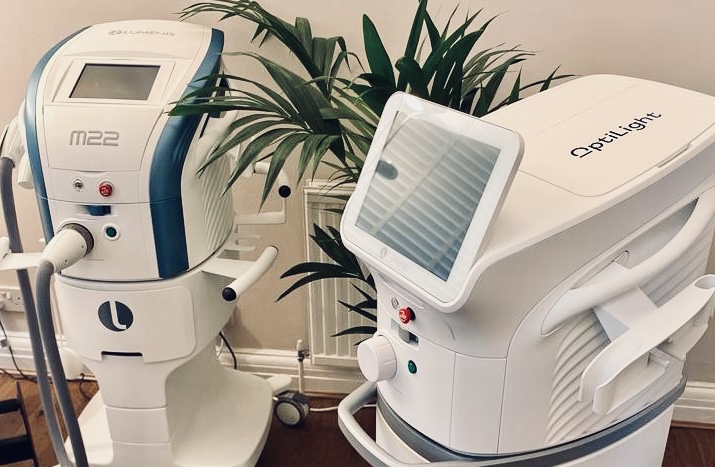Certain changes happen to our eye lids when we develop dry eyes. Inflammation occurs that causes small and abnormal blood vessels to develop near the surface of the eye lid skin. These abnormal blood vessels are called ‘Telangiectasias’. They increase the delivery of inflammatory markers to the eye lid margins which are close to where the meibomian glands are situated. In turn, the inflammation affects the normal function of the glands.
Intense Pulsed Light – as the name suggests is a pulse of intense light that is applied to the skin around the eyes. The light used is selected at a specific wavelength and strength. When applied to the surface of the skin, the light is absorbed by the haemoglobin of the abnormal vessels which destroys them by thrombosis. The major source of inflammation affecting the eye lids is then reduced or removed. Once this occurs, the number of inflammatory markers reaching the glands reduces. This then provides a better environment for the meibomian glands to function.
In Meibomian Gland Dysfunction, the quality of the meibum changes and rather than having the consistency of olive oil it can become yellow, cloudy, thicker and sometimes ‘toothpaste’ like. The openings of the gland can also become blocked. The heat produced during the IPL treatment helps to soften the meibum within the glands. The heat can also help to open the gland orifices. Manual gland expression after each IPL session removes most of the unwanted and abnormal meibum to make way for more oily secretions.
It has also been proposed that IPL can stimulate photomodulation. This is a process whereby energy is provided to the cells of the meibomian glands to improve their function.
The Dry Eye Centre has been using IPL to treat dry eye since 2014. We were the first clinic in the UK to adopt the technology. We were also the first to upgrade from the E>Eye device to the M22™ Lumenis.
The M22™ it is a multi-application machine that is also designed for use on the treatment of dermatological conditions such as Rosacea, settings can be precisely calibrated to alter the way the energy is delivered. Rather than a single flash per pulse, the energy is divided up into shorter separate flashes. This method minimises the impact the heat has to the epidermis of the skin so that more pulses can be performed per session. Changeable parameters also mean that the settings can be altered to safely provide IPL treatments for a wider range of skin pigment types.
The use of IPL for the treatment of dry eye was first pioneered by American Ophthalmologist Dr Rolando Toyos. In 2001, he used IPL to treat abnormal telangiectasias of the skin in patients with rosacea. He noticed that some of his patients with meibomian gland dysfunction reported that not only had their skin improved but also their dry eye symptoms. He worked with Lumenis to develop the M22™ protocol settings for the optimal and safe treatment to the eye lid margins. We have had regular visits from Dr Toyos who has helped us perfect our IPL treatment techniques.
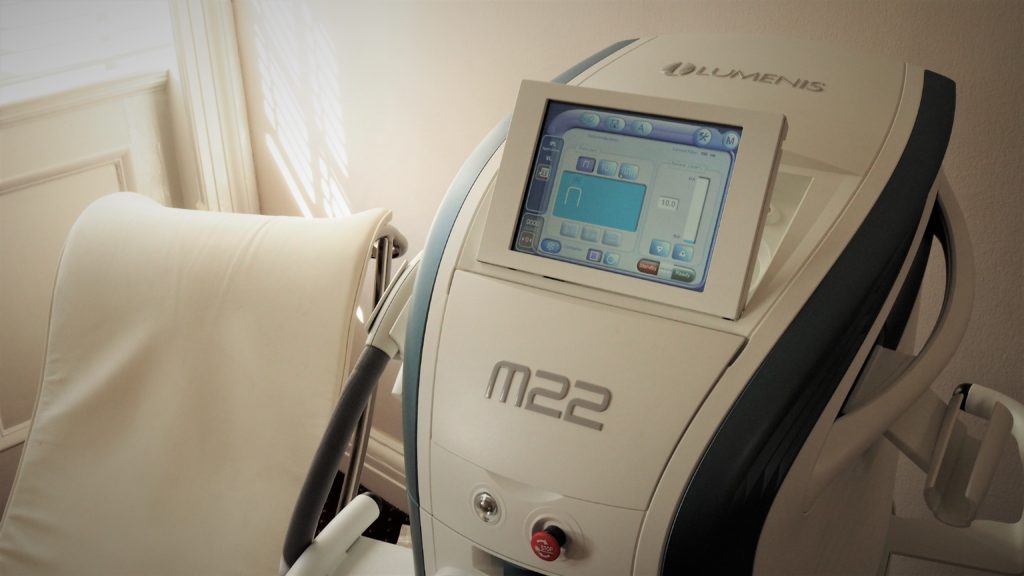
All other available IPL devices deliver each energy pulse as one single flash. At the higher energy levels, the heat that is generated can be too much for certain skin types, this causes discomfort during treatment. These IPL types: 1. restricts the energy level (fluence) that can be used, 2. Restricts the number of passes per treatment session and 3. Increases the recovery time needed between treatments.
Rather than delivering the energy in 1 single flash, OPT™ is capable of dividing the fluence into 3 separate equalised sub-pulses (multiple sequence pulsing). This means that the treatments are gentler for the skin making it more comfortable for the patient to tolerate higher energy levels. This also reduces the chance of adverse effects.
Advanced OPT™ settings allows for customisation so that the sub-pulse duration and the intervals between the pulses can be tailored for each patient.
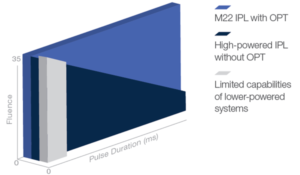
OPT™ ensures that the energy level is consistent throughout the treatment. In some other devices, the use of disposable bulbs means that energy levels can diminish as the bulb comes to the end of its lifetime.
With IPL devices, pulses are applied through the lightguide. The M22™ is unique in that there is continuous cooling of the lightguide surface. This also safeguards the skin that is being treated.
The improved pulse delivery of the M22™ means that safer treatment can be applied closer to the lid margins where the skin is thinner and more delicate.

In 2021 the Dry Eye Centre was the first to acquire the Lumenis OptiLight IPL in the UK. This machine uses Lumenis’ patented Optimal Pulse Technology™ and is the first IPL FDA approved management of Dry Eye conditions.
The innovative addition to this device is its Patented OPT™ Handpiece. This enables safer and more effective treatments closer to the lid margins.
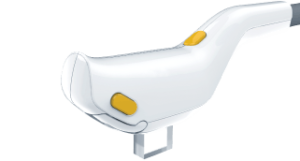

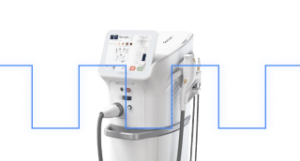
With the Patented Optimal Pulse Technology™ and Patented OPT™ Handpiece we use the OptiLight device to safely provide IPL treatment directly to the upper lids in a wider range of patients.
